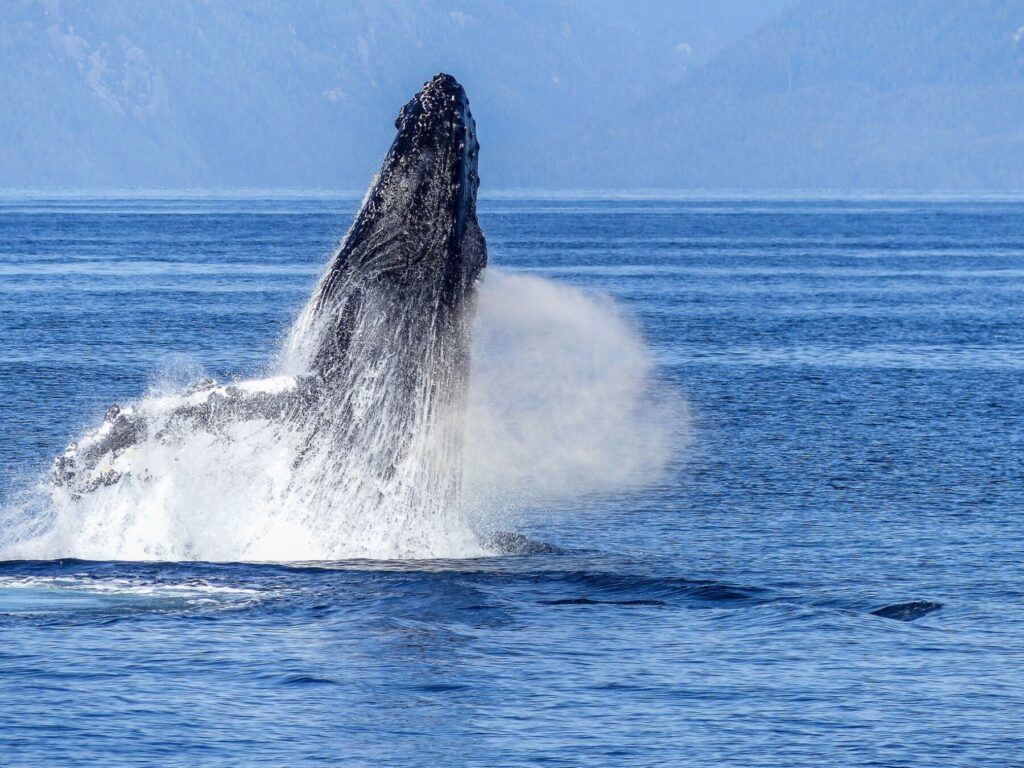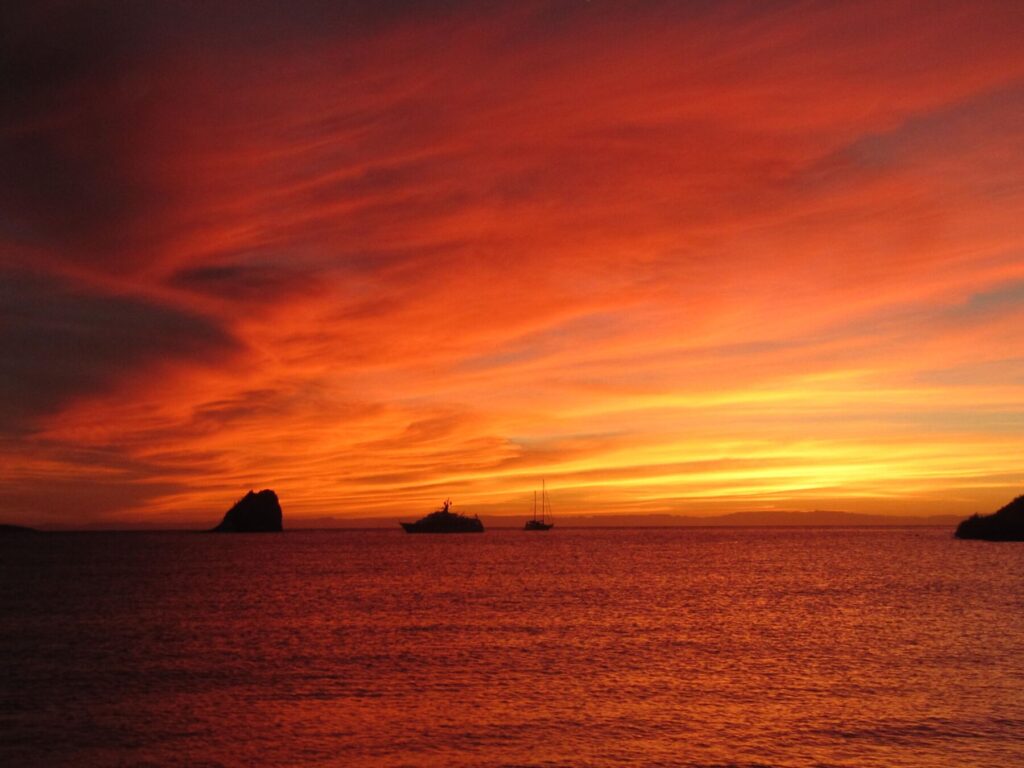
Guide to Whales of Baja California, Mexico
Baja California, Mexico, one of the world’s premier destinations for whale watching offers incredible opportunities to witness a wide variety of marine giants in their natural habitat. From gray whales migrating to lagoons for breeding to majestic blue whales gliding through the Sea of Cortez, this region promises unforgettable encounters with some of the ocean’s most awe-inspiring creatures.
When to Go Whale Watching in Baja California
While the prime whale-watching season runs from December to April, the best time to visit depends on the species you hope to see. February through April is the sweet spot when most species, including gray whales, humpbacks, and blue whales, frequent Baja’s waters. Each species tends to stick to specific regions within Baja California Sur, so you may need to plan your trip around your top whale-watching goals.
Whale Species of Baja
1. Gray Whales
The gray whales are one of Baja’s most famous visitors. From December to April, they migrate from the Arctic to Baja’s warm lagoons to breed and raise their calves. These gentle giants offer some of the most interactive whale-watching experiences, often approaching boats in the lagoons to the delight of onlookers. Learn more about our favorite whale watching trip to San Ignacio Lagoon.
Scientific Name: Eschrichtius robustus
Length: 40 to 50 feet (12 to 15 meters)
Weight: Up to 45 tons (approximately 40.8 metric tonnes)
Life span: 55 to 70 years
Feeding:
- Diet: Gray whales primarily feed on benthic invertebrates, such as amphipods, which they scoop from the ocean floor. They are known for their unique feeding method, known as “bottom-feeding,” where they roll on their sides and take in sediment and prey.
- Feeding Grounds: Their main feeding areas are in the cold, nutrient-rich waters of the Bering and Chukchi Seas during the summer months, where they can consume significant quantities of prey that grow so prolifically due to the extremely long days of light.
Travel and Migration:
- Migration Pattern: Gray whales have one of the longest migrations of any mammal, traveling over 10,000 miles round trip at a rate of 3 to 6 miles per hour from their Arctic feeding grounds to their breeding lagoons in Baja California.
- In Baja: They typically arrive in Baja’s warm lagoons, such as San Ignacio Lagoon and Magdalena Bay, from December to April. These lagoons serve as critical breeding and calving areas.
Behavior in Baja:
- During Their Stay: While in Baja, gray whales are known for their friendly nature. They often approach boats, allowing for incredible up-close encounters. Mothers can be seen nursing their calves, providing a unique opportunity for whale watchers to witness the bond between mother and child. Additionally, the lagoons provide a sheltered environment for the calves to grow and learn essential survival skills. It’s interesting to note that the grey whales eat minimally while in Baja.
- Best places to see gray whales:
- Magdalena Bay
- San Ignacio Lagoon
- Ojo de Liebre Lagoon
If you’re after an up-close encounter, San Ignacio Lagoon is particularly famous for the friendly nature of its gray whales. Multi-day tours often include chances to witness the whales nurturing their calves.

2. Humpback Whales
Humpback whales are the most common species around Cabo San Lucas. They come to the warm waters of Baja to breed and give birth, and their acrobatic displays make them a highlight of any whale-watching tour. You might even catch them breaching from shore if you’re in the right location!
Scientific Name: Megaptera novaeangliae
Length: 40 to 60 feet (12 to 18 meters)
Weight: Up to 40 tons (approximately 36.3 metric tonnes)
Feeding:
- Diet: Humpback whales primarily feed on small fish and krill. They are known for their diverse feeding techniques, including bubble net feeding, where they create bubbles to corral fish into tight groups before lunging upward to eat.
- Feeding Grounds: Their main feeding grounds are typically in colder waters, such as Alaska and the North Atlantic, where they can take advantage of abundant prey during the summer months.
Travel and Migration:
- Migration Pattern: Humpback whales migrate from their feeding grounds in colder waters to warmer breeding areas, including Baja California, where they congregate from December to April.
- In Baja: During their time in Baja, humpbacks travel significant distances within the region, often moving between different breeding and calving areas.
Behavior in Baja:
- During Their Stay: Humpback whales are known for their acrobatic displays, including breaching, tail slapping, and flipper slapping. These behaviors are thought to play a role in communication and mating rituals. In addition to their spectacular displays, humpbacks also engage in social behaviors, often traveling in groups or pairs. This provides opportunities for researchers and whale watchers to observe their interactions and behaviors in a natural setting. Like Grey Whales, Humpbacks do most of the eating during the summer months when they are in the far north.
- Best places to spot humpbacks:
- Cabo San Lucas
- Todos Santos
- Cabo Pulmo
While day tours from Cabo San Lucas and San José del Cabo offer reliable opportunities to see humpbacks, shore-based whale watching is also possible. Los Cabos is a great option if you want the flexibility to combine whale watching with other activities.
Find Your Warm Water Winter Destination…
*** Our service is free to you and paid for by our partner outfitters. We guarantee the same price as booking directly with the outfitter.
3. Blue Whales
Blue whales, the largest animal on Earth, can be spotted in the Sea of Cortez from February to March. Although their appearances are less predictable and the migration window is short, blue whale sightings are a dream come true for many. If you’re lucky enough to see one, you’ll never forget the awe of witnessing this ocean giant in its natural environment.
Scientific Name: Balaenoptera musculus
Length: Up to 100 feet (30 meters)
Weight: Up to 200 tons (approximately 181 metric tonnes)
Characteristics:
- Size: Blue whales are the largest animals on Earth, with a heart weighing as much as a small car and tongues that can weigh as much as an elephant.
- Coloration: They have a bluish-gray color with lighter mottling, making them distinctive when they surface. Their skin is often covered with lighter spots, which can help researchers identify individuals.
Behavior:
- Feeding: Blue whales primarily feed on tiny shrimp-like animals called krill. They are baleen whales, which means they filter-feed by taking in large mouthfuls of water and then expelling it through their baleen plates, trapping the krill inside. Unlike Grey and Humpback whales, blue whales can eat up to 4 tons of krill per day while in Baja.
- Migration: Blue whales migrate long distances between their feeding grounds in the cold waters of the Arctic and their breeding grounds in warmer waters, such as those off the coast of Baja California. Their presence in the Sea of Cortez usually occurs from February to March.
Viewing in Baja:
- Best Locations: The Bay of Loreto is an excellent spot for blue whale watching. Tours typically run from late February to early March, when these giants are migrating through the area.
A day tour with an experienced outfitter is the best way to maximize your chances of seeing these rare whales. While it can be a bit of a gamble due to their brief presence, the stunning beauty of Loreto makes the journey worth it.

4. Whale Sharks
Though technically not whales, whale sharks deserve a place on this list due to their impressive size and frequent presence around Baja California Sur. Unlike other species, whale sharks can be seen from October to April, making them a great addition to a winter trip.
Scientific Name: Rhincodon typus
Length: Up to 40 feet (12 meters)
Weight: Up to 20.6 tons (approximately 18.7 metric tonnes)
Characteristics:
- Size: Whale sharks are the largest living fish, with mouths that can span up to 5 feet (1.5 meters) wide. Despite their massive size, they are filter feeders, consuming plankton and small fish.
- Coloration: These sharks have a distinctive pattern of white spots and stripes on their dark gray or blue bodies, making them easily recognizable. The unique pattern on each shark helps researchers identify individuals.
- Behavior:
- Feeding: Whale sharks feed on plankton, krill, and small fish by filtering large volumes of water through their gills as they swim slowly. They are known to feed at or near the surface, making them easy to spot.
- Migration: These sharks migrate to nutrient-rich areas for feeding, and their presence in Baja California Sur typically occurs from October to April.
Viewing in Baja:
- Best Locations: La Paz is the premier destination for swimming with whale sharks, particularly in the waters around the El Mogote Peninsula.
- Swimming with Whale Sharks: These gentle creatures are known for their calm nature, allowing swimmers to safely join them in the water. The chance to swim alongside them is a highlight of many Espiritu Santo Safari Camping Trips, where you can also visit sea lion colonies and explore the rich marine life of the Sea of Cortez.

5. Other Whale Species
Baja California is home to other equally fascinating species that you might encounter:
- Orcas (Killer Whales): Though sightings are rare, orcas may appear in the northern Gulf of California during humpback whale season (December to April) when they hunt migrating prey like whale sharks and mobula rays.
- Sperm Whales: Sperm whales are the most common large whale found in the Gulf of California and live there year-round. They prefer deeper waters, making sightings more challenging, but if you’re fortunate enough to see them, it’s often in groups or pods.
- Fin Whales: Fin whales are another resident population of the Gulf of California. Loreto is a prime location to spot them, especially when combined with blue whale tours.

Day vs. Multi-Day Tours: Which to Choose?
Baja California offers both day tours and multi-day expeditions for whale watchers. Here’s a quick comparison to help you decide:
- Day Tours: Ideal for travelers on a tight schedule or those looking for a quick adventure. Day tours are most commonly available for humpbacks, whale sharks, and sometimes gray whales in easily accessible areas like Cabo San Lucas and La Paz.
- Multi-Day Tours: Perfect for a more immersive experience, especially if you want to explore the more remote gray whale lagoons or have a better chance of encountering species like blue whales. These tours often include accommodations and additional wildlife-viewing opportunities, such as dolphins, sea lions, and seabirds.

Tips for an Unforgettable Whale Watching Experience in Baja
- Choose the Right Time: Plan your trip between February and April for the best chance of seeing multiple species, including gray, humpback, and blue whales.
- Pack for Comfort: Bring layers for cooler mornings and evenings on the water, as well as sunscreen and a hat for daytime trips.
- Book Early: Popular tours, especially multi-day adventures, can fill up quickly during peak season, so it’s best to book in advance.
- Respect the Wildlife: Always follow your outfitter’s guidelines and keep a respectful distance from the animals. Baja’s marine life is protected, and responsible tourism helps ensure these incredible encounters continue for future generations.
Conclusion
Baja California is a bucket-list destination for whale enthusiasts, offering unparalleled opportunities to witness some of the ocean’s most majestic creatures. Whether you’re hoping to see gray whales nurturing their calves, humpbacks breaching near shore, or swimming alongside a whale shark, Baja has it all.
Ready to plan your adventure? Read more about Baja whale-watching tours in Baja and prepare for a once-in-a-lifetime experience!
Start Planning Your Best Adventure
Dispatches from adventure tours around the world and tips for intrepid travelers. Read Our Blog
Warm Places to Visit This Winter: November through March Adventures
When winter’s chill sets in, there’s no better time to escape to somewhere warm. Whether you’re looking for hot places to visit in December, warm destinations for January, or an adventurous trip that blends culture, wildlife, and outdoor exploration, there’s a perfect winter getaway for every traveler.
Keep Reading > Warm Places to Visit This Winter: November through March Adventures
Galapagos Islands vs. Sea of Cortez: Guide to Marine Wildlife Adventures
When it comes to unforgettable marine adventures, two places stand out: the Galapagos Islands and the Sea of Cortez. Both destinations offer unique ecosystems, stunning wildlife, and rich marine life. However, each provides a different type of adventure, making it crucial to choose the right one for your dream trip. In this guide, we’ll dive into the major differences between the two and help you decide which destination is right for you.
Keep Reading > Galapagos Islands vs. Sea of Cortez: Guide to Marine Wildlife Adventures
Baja, Mexico – Wildlife Adventures All Year Long
In this article we discuss the advantages of traveling each time of year in Baja and break down our favorite Baja adventures.
Keep Reading > Baja, Mexico – Wildlife Adventures All Year Long










